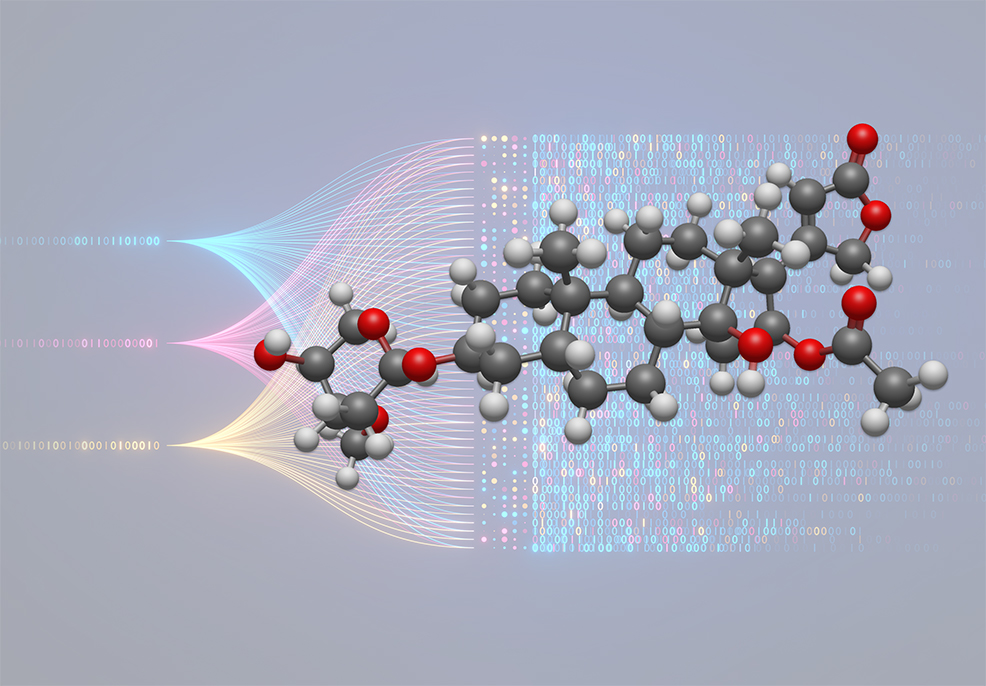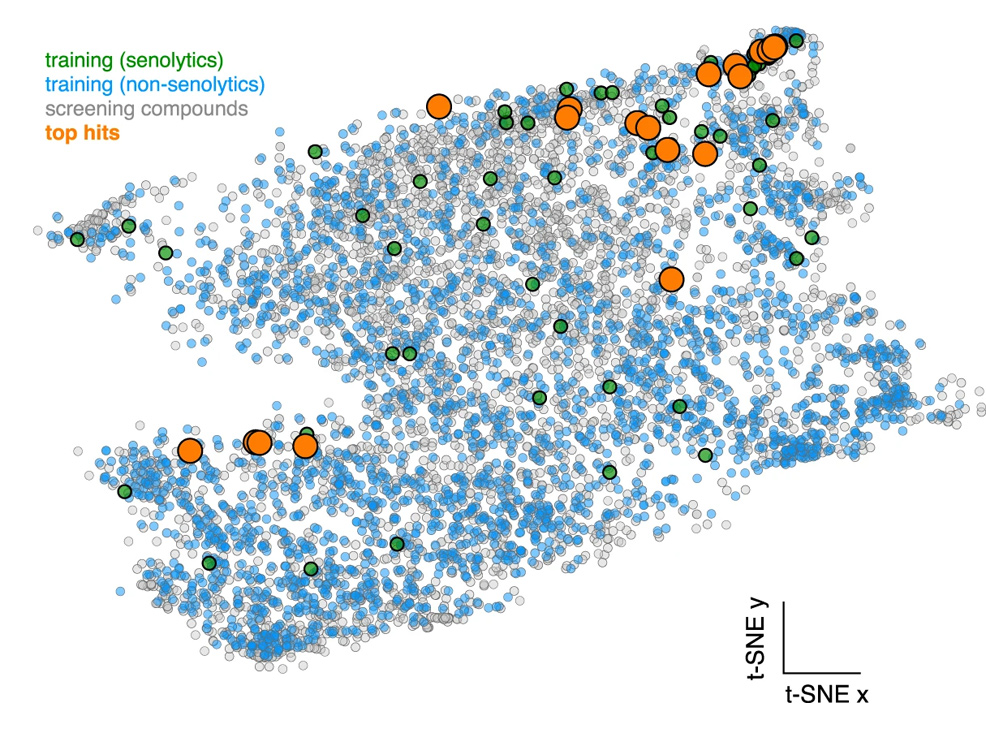
21st June 2023 AI finds potential anti-aging molecules A machine learning model has been trained to recognise the key features of chemicals with senolytic activity. It recently found three chemicals able to remove senescent cells without damaging healthy cells.
Senescent cells, often referred to as "zombie cells", are cells that have stopped dividing but remain metabolically active. These cells increase with age and secrete harmful substances that can lead to chronic inflammation and affect the function of nearby cells. This contributes to aging and various age-related diseases like heart disease, diabetes, Alzheimer's, and certain cancers. Their elimination or reprogramming is a key focus of aging-related research. Previous studies have shown early promise, but few chemicals have been identified that can safely eliminate senescent cells. This month, researchers from the University of Edinburgh, Scotland, have developed a new method that is both safe and hundreds of times cheaper than standard screening techniques. The team used a machine learning model, training it to recognise the key features of chemicals with senolytic activity, based on data from more than 2,500 chemical structures mined from previous studies. The AI subsequently identified 21 potential drug candidates for experimental testing. Lab tests in human cells revealed that three of the chemicals – ginkgetin, periplocin and oleandrin – were able to remove senescent cells without damaging healthy cells.
Two-dimensional t-SNE visualisation of all compounds in this study. Those with prediction scores above 44% from the XGBoost algorithm are marked with orange circles.
All three are natural products found in traditional herbal medicines, the team says. Oleandrin was found to be more effective than the best-performing known senolytic drug of its kind. "This study demonstrates that AI can be incredibly effective in helping us identify new drug candidates – particularly at early stages of drug discovery and for diseases with complex biology or few known molecular targets," said Dr Diego Oyarzún, who leads the University's Biomolecular Control Group. "This work was borne out of intensive collaboration between data scientists, chemists, and biologists," said Dr Vanessa Smer-Barreto, of the Institute of Genetics and Cancer and School of Informatics. "Harnessing the strengths of this interdisciplinary mix, we were able to build robust models and save screening costs by using only published data for model training. I hope this work will open new opportunities to accelerate the application of this exciting technology." A paper on the new AI model is published this month in the peer-reviewed journal Nature Communications.
Comments »
If you enjoyed this article, please consider sharing it:
|








